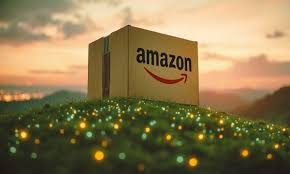CONTACT US
info@bidaiondo.com

We already know the (surprising) consequences of Amazon abandoning Google Shopping

On July 23rd, the search engine advertising world woke up to Amazon's surprising decision to abandon Google Shopping. An unexpected and multi-million dollar move, it left many doubts about how it could impact the entire global advertising ecosystem. The theory was that among those consequences would most likely be a reduction in CPCs resulting from the sudden reduction in competition from such a giant. Furthermore, brands would have an opportunity to gain more visibility and impression share in Google Shopping results. It seemed like a dream scenario for advertisers, but the reality is much more complex. A foreseeable consequence... and another paradoxical one of Amazon's exit from Google Shopping. The answer, according to a new study by Optmyzr, is more complex than it seems. Its analysis, based on data from more than six thousand accounts, showed a clear pattern. After Amazon's exit: Clicks increased by 7.8%. CPCs fell by 8.3%. Conversion value decreased by 5.5%. In other words, advertisers gained more traffic and paid less for it, but generated less revenue. The study explains the paradox because this traffic wasn't neutral: it was users searching for Amazon, with expectations built on years of convenience, fast shipping, and aggressive pricing. When they clicked on ads and landed on competitor pages, many bought less or looked for lower-value products. The authors dub this phenomenon the "volume trap": an increase in clicks and conversions that doesn't translate into greater profitability. And it actually makes a lot of sense. Even if you eliminate the obvious appeal that the name "Amazon" can have on users, just consider that there are more than 200 million Prime customers worldwide. People who, given a similar price, will always choose to buy from the platform where they have the opportunity to get fast and free shipping. Winners and Losers: A History of Verticals
But not all sectors reacted equally to Amazon's disappearance. The results of the study, category by category, reveal who was ready to capture that traffic and who wasn't. Electronics was the big winner. Here, clicks increased by 11.5%, CPC fell by 7.1%... but the most surprising thing was the jump in conversions: +81%. ROAS also grew (+7.1%), as did conversion value (+10.9%). Why? Because in this vertical, there are players that can compete head-to-head with Amazon. Major brands and marketplaces have competitive prices, fast delivery times, and a reputation for trust. In other words, they knew how to meet consumer expectations, who, unable to find Amazon, were looking for a credible substitute. Sports and Home fell into the volume trap. With 13% more clicks and stable costs, everything seemed to be going well for Home & Garden. However, conversion value fell by 7.5% and ROAS declined. Customers were arriving, yes, but they were spending less. Here, the inability to offer Amazon's convenience outweighed the traffic gains. Sporting goods, meanwhile, became the perfect example of the volume trap. Conversions increased by 20%, but the value of those purchases plummeted by almost 10%. Consumers, attracted by the extra visibility, ended up buying cheaper or simply didn't find the shopping experience they expected. Health and Beauty: More Sales, But Not Better Clicks increased by 12% and conversions by 14%. However, the value remained flat. More sales were made, but not better. The only relief for advertisers was that the cheaper cost per click (-11.5%) helped keep ROAS practically stable. Clothing and Accessories Suffered the Hardest Hit With more than a thousand accounts analyzed, this high-volume category clearly showed the sector's fragility in the face of Amazon. Conversions fell by 7.4%, value by 9.5%, and ROAS by 7.3%. The trend on Amazon had educated consumers about wide selection, low prices, and easy returns. Competing in that arena was very complicated. What advertisers can learn As you can see, on Google Shopping, Amazon wasn't just competing in advertising auctions: in a way, it was also playing consumer expectations to its advantage. Shoppers haven't immediately adapted to the new Shopping landscape. They're still looking for speed, aggressive pricing, and a frictionless purchasing process. And if they don't find it, clicks turn into mediocre results. The big lesson for advertisers is that it's not enough to fill the void left by a giant. Users arrive loaded with expectations that, if you can't meet them, become a burden. The study's authors urge brands not to be seduced by clicks. Always monitoring value metrics such as average ticket and ROAS is essential for a sound strategy. It's not about being the new Amazon, but rather about finding the space where your offering stands out without falling into the volume trap. Amazon has left Google Shopping, but not from consumers' minds. And as long as their expectations remain, competing won't be a matter of volume, but of value.
Last news
Shein y Francia en pie de guerra: el Gobierno quiere suspender la plataforma por tiempo indeterminado.

Bizum se alía con Minimalism para lanzar La Bizumería, una inesperada tienda online de prendas de edición limitada.

online trading systems.
 We show you the best way to market products and services online, through a professional service of installation, management and maintenance of your virtual store
We show you the best way to market products and services online, through a professional service of installation, management and maintenance of your virtual store
We program to suit you
 We help you achieve operational excellence in all your business processes, whether they are production, logistics, service or office processes. In addition, we assure you to maintain continuous improvement in your management.
We help you achieve operational excellence in all your business processes, whether they are production, logistics, service or office processes. In addition, we assure you to maintain continuous improvement in your management.
Bidaiondo Articles
5 tips from Instagram's CEO to increase your reach… on Instagram.

Instagram CEO Adam Mosseri has shared a series of recommendations to improve content performance on the platform and capture users' attention from the very first seconds. Here's a summary of the 5 key tips that can help you boost the reach of your posts and Reels. Who better than him to advise you? Tips to Increase Your Reach on Instagram 1. Grab Attention in the First 3 Seconds Mosseri emphasizes that the first few seconds of a video are...
How to increase revenue and customer loyalty with a referral platform.

Today, brands that cultivate strong, lasting relationships with their customers are the ones that truly succeed. But beyond simply selling products, the real challenge lies in transforming those customers into brand ambassadors. Referral platforms are a powerful tool for this, facilitating the creation of an efficient and scalable referral program. Through referrals, satisfied customers can recommend your brand to friends, family, and colleagues,...

ABOUT US
FILES

Welcome to Bidaiondo, dear user
BIDAIONDO SL, as the party responsible for the website www.bidaiondo.com, uses its own operating cookies and those of third parties of an analytical nature to allow the use of the website, analyze our services and show you information related to your preferences based on a profile drawn up from of your browsing habits (for example: pages visited). Please bear in mind that, if you do not activate some types of cookies, such as operational and analytical cookies, your experience of using this website may be affected. You can obtain more information and configure your preferences in the CONFIGURE option that appears below, you can reject cookies in the REJECT AND CLOSE option or accept all cookies and continue browsing in the ACCEPT AND CLOSE option.
So do you want to know more?
Data privacy seems important to you, and it is to us too. We store cookie data for 13 months. If you want to know more, you can visit our pages Privacy Policy y Cookies policy. Do you know what cookies are? Cookies are files that are used by virtually all websites. When browsing our page, they are installed in your browser or device to ensure that the website works correctly and store information about your visit. The data provided by cookies treat the user anonymously and in no case do they store personal information.
The data collected by the cookies we use are:
- Addresses IP
- References of visited pages
- References of downloaded files
- The website itself www.bidaiondo.com
- https://www.moz.com
- https://secure/europeanssl.eu

 Spanish
Spanish













